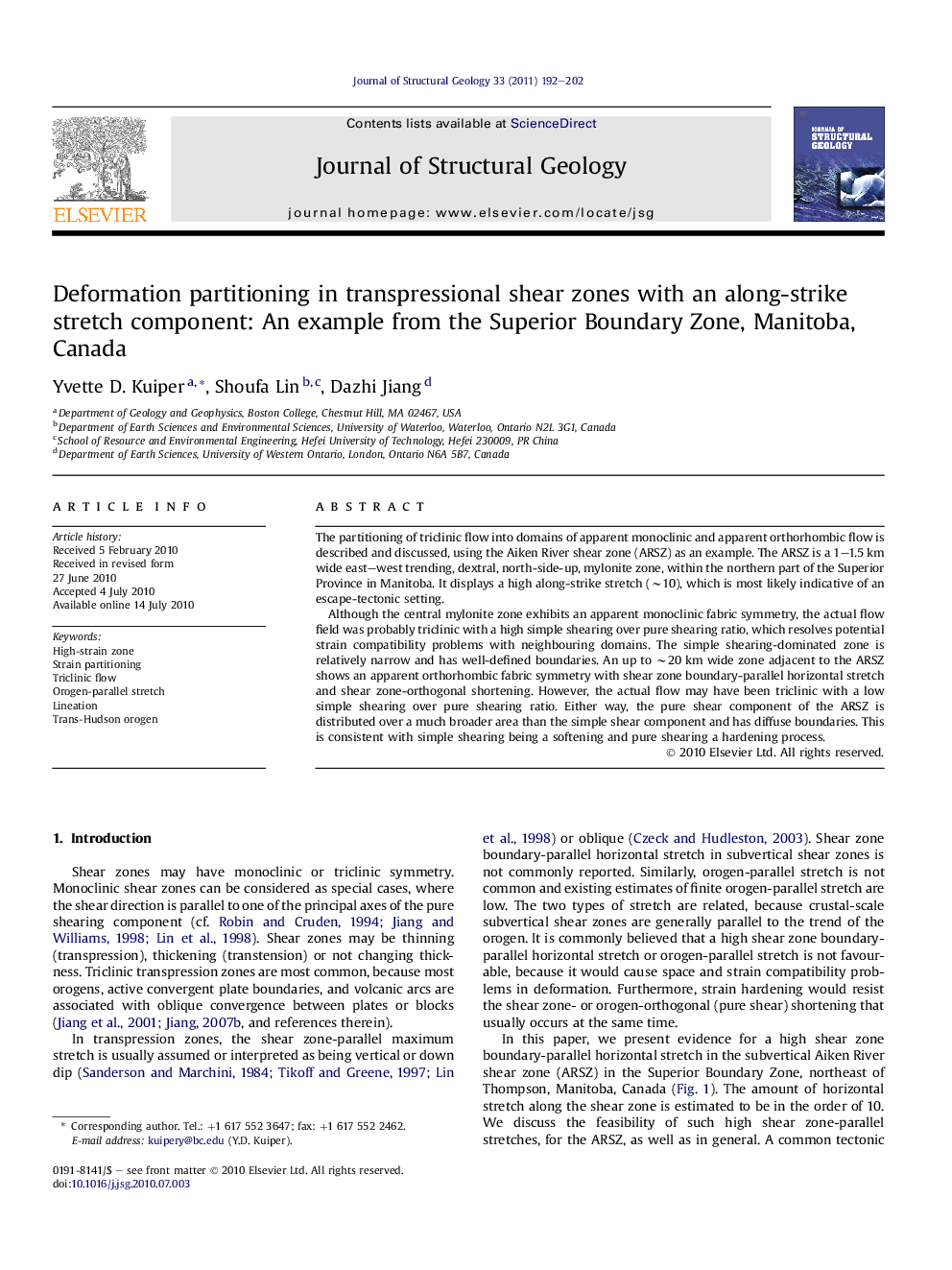| Article ID | Journal | Published Year | Pages | File Type |
|---|---|---|---|---|
| 4733557 | Journal of Structural Geology | 2011 | 11 Pages |
The partitioning of triclinic flow into domains of apparent monoclinic and apparent orthorhombic flow is described and discussed, using the Aiken River shear zone (ARSZ) as an example. The ARSZ is a 1–1.5 km wide east–west trending, dextral, north-side-up, mylonite zone, within the northern part of the Superior Province in Manitoba. It displays a high along-strike stretch (∼10), which is most likely indicative of an escape-tectonic setting.Although the central mylonite zone exhibits an apparent monoclinic fabric symmetry, the actual flow field was probably triclinic with a high simple shearing over pure shearing ratio, which resolves potential strain compatibility problems with neighbouring domains. The simple shearing-dominated zone is relatively narrow and has well-defined boundaries. An up to ∼20 km wide zone adjacent to the ARSZ shows an apparent orthorhombic fabric symmetry with shear zone boundary-parallel horizontal stretch and shear zone-orthogonal shortening. However, the actual flow may have been triclinic with a low simple shearing over pure shearing ratio. Either way, the pure shear component of the ARSZ is distributed over a much broader area than the simple shear component and has diffuse boundaries. This is consistent with simple shearing being a softening and pure shearing a hardening process.
Research highlights► Partitioning of triclinic flow into domains of apparent monoclinic and apparent orthorhombic flow. ► Discussion of strain compatibility across shear zones with high shear zone boundary-parallel horizontal stretch. ► The pure shearing component of a shear zone is normally distributed over a much broader area than the simple shearing component. This is consistent with simple shearing being a softening and pure shearing a hardening process.
